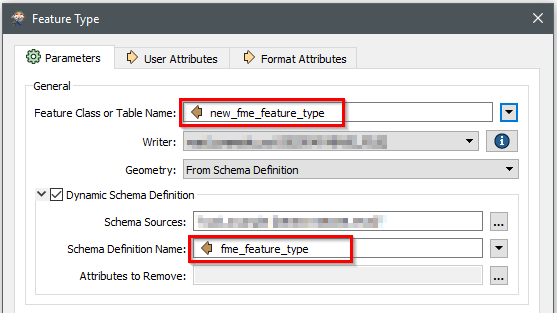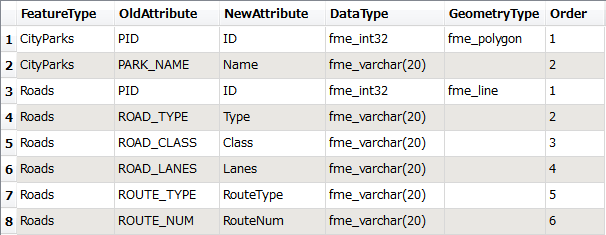Hi All, I have a Child workbench which takes input as SDE FeatureClasses and Creates FGDB. i am passing all feature classes dynamically to the writer (all different types like points, polygons and polyline featureclasses). My SDE Feature Class has Long Attribute(Fields) Names and I required to create FGDB Feature Classes with Short Attribute(Fields) names. I have a web service which gives JSON output of Short Names. For each feature class, i need to connect to web service and get short names, create FGDB feature class with these short names. Could anyone have an idea how can I dynamically update FGDB feature class?
Solved
Dynamic Attribute Mapping
Best answer by david_r
Here's a sample workspace that shows how to leverage the FeatureReader and a PythonCaller to rename attributes in a dynamic workflow. You'll notice that the code in the PythonCaller has two main branches, one for the schema features and one for the data features.
You'll have to implement your own renaming function in the get_new_attribute_name() method, the current code is just for demonstration purposes. You may also have to adapt the rules on line 8 to make sure that necessary format attributes aren't renamed.
Let me know if anything is unclear.
This post is closed to further activity.
It may be an old question, an answered question, an implemented idea, or a notification-only post.
Please check post dates before relying on any information in a question or answer.
For follow-up or related questions, please post a new question or idea.
If there is a genuine update to be made, please contact us and request that the post is reopened.
It may be an old question, an answered question, an implemented idea, or a notification-only post.
Please check post dates before relying on any information in a question or answer.
For follow-up or related questions, please post a new question or idea.
If there is a genuine update to be made, please contact us and request that the post is reopened.











